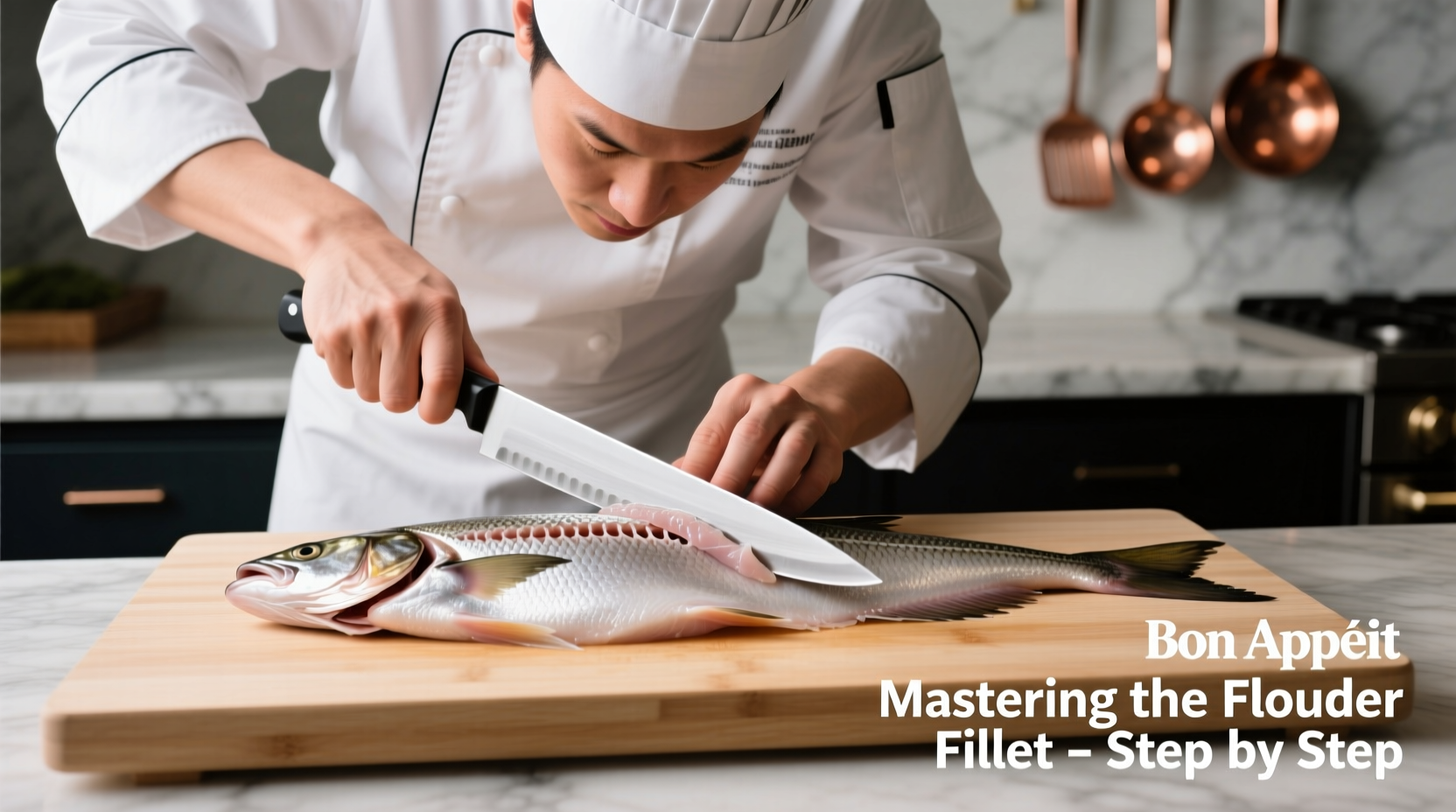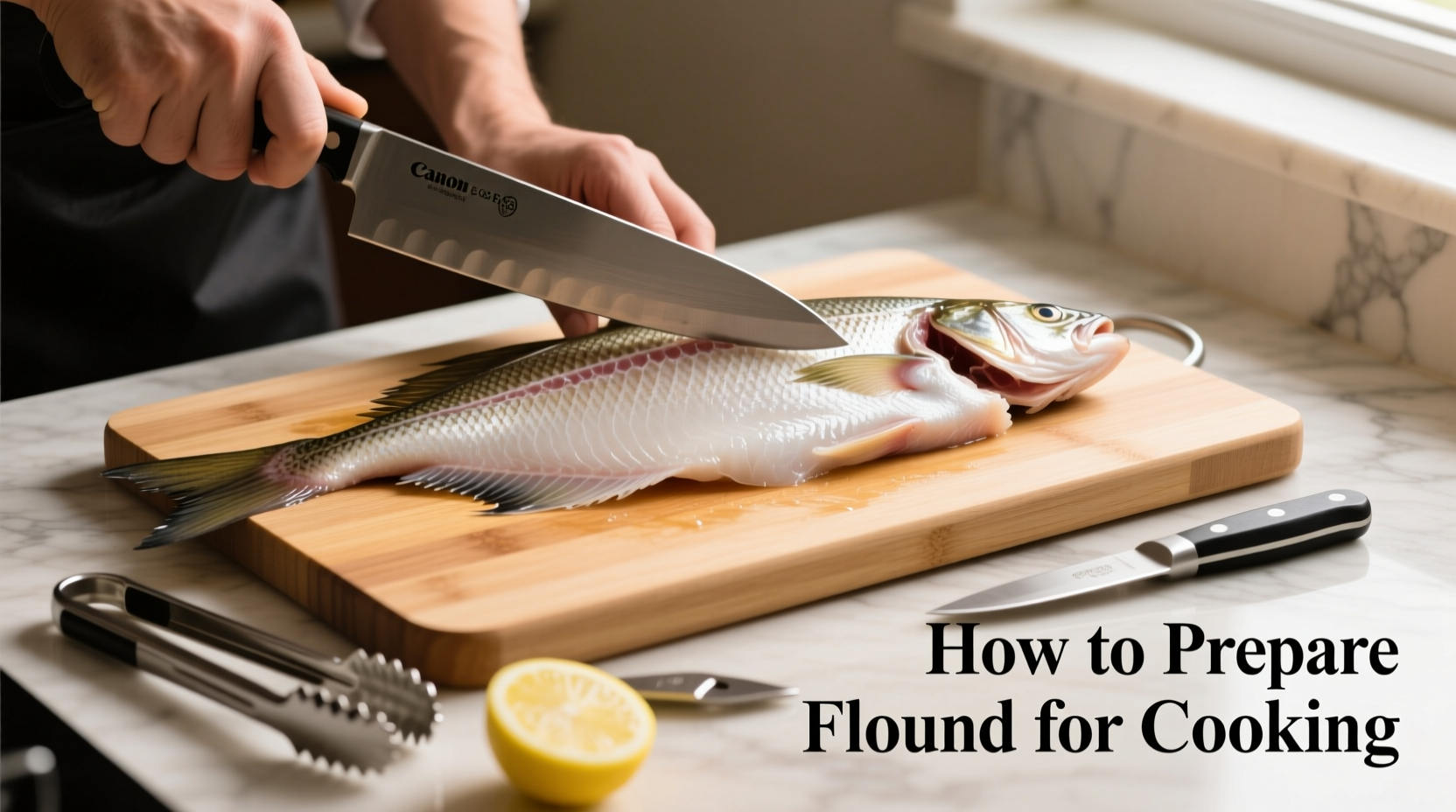To properly prepare flounder for cooking, thoroughly clean the fish, remove scales if present, trim fins, fillet if desired, and pat dry before seasoning. This step-by-step guide provides professional techniques for optimal flavor and texture in your final dish.
Master Flounder Preparation: From Fresh Catch to Perfect Plate
Flounder's delicate texture and mild flavor make it a favorite among seafood lovers, but improper preparation can ruin its subtle qualities. Knowing exactly how to prepare flounder for cooking transforms this versatile fish from ordinary to extraordinary. Whether you're working with whole flounder or pre-filleted portions, proper preparation ensures maximum flavor retention, ideal texture, and food safety compliance.Why Proper Flounder Preparation Matters
Flounder has exceptionally tender flesh that easily absorbs flavors but can become mushy with incorrect handling. Unlike sturdier fish like salmon, flounder requires gentle treatment throughout the preparation process. According to the FDA Food Code, proper seafood handling prevents cross-contamination and maintains freshness—critical factors when learning how to prepare flounder fillets for cooking.Essential Tools for Flounder Preparation
Before starting your flounder preparation, gather these tools:- Sharp fillet knife (6-7 inches)
- Non-slip cutting board
- Fish scaler or dull knife edge
- Kitchen tweezers for pin bones
- Paper towels for drying
- Stainless steel bowl for scraps
Step-by-Step Flounder Preparation Process
Selecting and Storing Fresh Flounder
Fresh flounder should have clear eyes, firm flesh, and a clean ocean smell—not fishy. When purchasing whole flounder, check for bright red gills and no discoloration. Store on ice in the refrigerator at 32-34°F (0-1°C) and use within 24 hours for best results. Never leave flounder at room temperature for more than 20 minutes during preparation—a critical food safety practice outlined by the National Oceanic and Atmospheric Administration.Scaling Whole Flounder (When Necessary)
Most commercially sold flounder has already been scaled, but if you're working with a fresh-caught whole fish:- Hold the fish firmly by the tail
- Using a scaler or dull knife edge, scrape from tail to head
- Work under running water to contain scales
- Continue until skin feels smooth
| Preparation Method | Best For | Time Required | Difficulty Level |
|---|---|---|---|
| Whole Roasting | Social gatherings, presentation | 15 minutes | Intermediate |
| Skin-On Fillets | Pan-searing, grilling | 10 minutes | Beginner |
| Skin-Off Fillets | Delicate preparations, sauces | 12 minutes | Intermediate |
| Butterflied | Stuffing, baking | 8 minutes | Advanced |
Cleaning and Gutting Whole Flounder
If working with a whole flounder:- Make a shallow cut behind the gills down to the backbone
- Carefully remove gills and internal organs
- Rinse cavity thoroughly under cold water
- Use paper towels to dry interior completely
Removing Fins and Tail
Flounder fins contain sharp spines that can be hazardous. To safely remove:- Cut behind the pectoral fins using kitchen shears
- Trim the dorsal fin along the top of the fish
- Remove the anal fin on the underside
- Cut the tail fin at its base
Filleting Flounder: Professional Technique
Flounder filleting requires precision due to its thin structure:- Place fish on cutting board with dorsal side up
- Make a cut behind the gills down to the backbone
- Angle knife toward the backbone and slice along it
- Use a sawing motion to separate flesh from bones
- Flip fish and repeat on other side
- Check for pin bones using tweezers

Final Preparation Before Cooking
The critical last steps before cooking flounder:- Dry thoroughly: Pat both sides with paper towels—moisture prevents proper searing
- Check for bones: Run fingers over fillets to detect any remaining pin bones
- Season appropriately: Flounder pairs well with lemon, herbs, and light seasonings
- Temperature check: Bring to near room temperature before cooking for even results
Avoiding Common Flounder Preparation Mistakes
Many home cooks make these critical errors when preparing flounder:- Over-handling: Flounder's delicate flesh breaks easily—use minimal handling
- Insufficient drying: Wet fish steams instead of sears—always pat dry thoroughly
- Incorrect knife angle: Too steep an angle leaves valuable meat on the bone
- Skipping bone check: Flounder contains numerous pin bones requiring careful removal
Pro Tips for Perfect Flounder Every Time
Professional chefs recommend these advanced techniques when preparing flounder for cooking:- Salt early: Lightly salt fillets 15 minutes before cooking to enhance texture
- Chill before filleting: Slightly firm fish is easier to handle and fillet cleanly
- Use the right oil: High smoke point oils like grapeseed work best for searing
- Don't overcook: Flounder is done when it flakes easily with a fork (125-130°F internal temperature)
When to Scale vs. When to Skip Scaling
Understanding context boundaries prevents unnecessary work. Most commercially sold flounder has already been scaled, but here's when scaling is necessary:- Scale if: You've caught the fish yourself or purchased whole from a fisherman
- Skip scaling if: The fish has a smooth texture and no visible scales (common with store-bought)
- Exception: Some species like summer flounder have thinner scales that may not require removal











 浙公网安备
33010002000092号
浙公网安备
33010002000092号 浙B2-20120091-4
浙B2-20120091-4